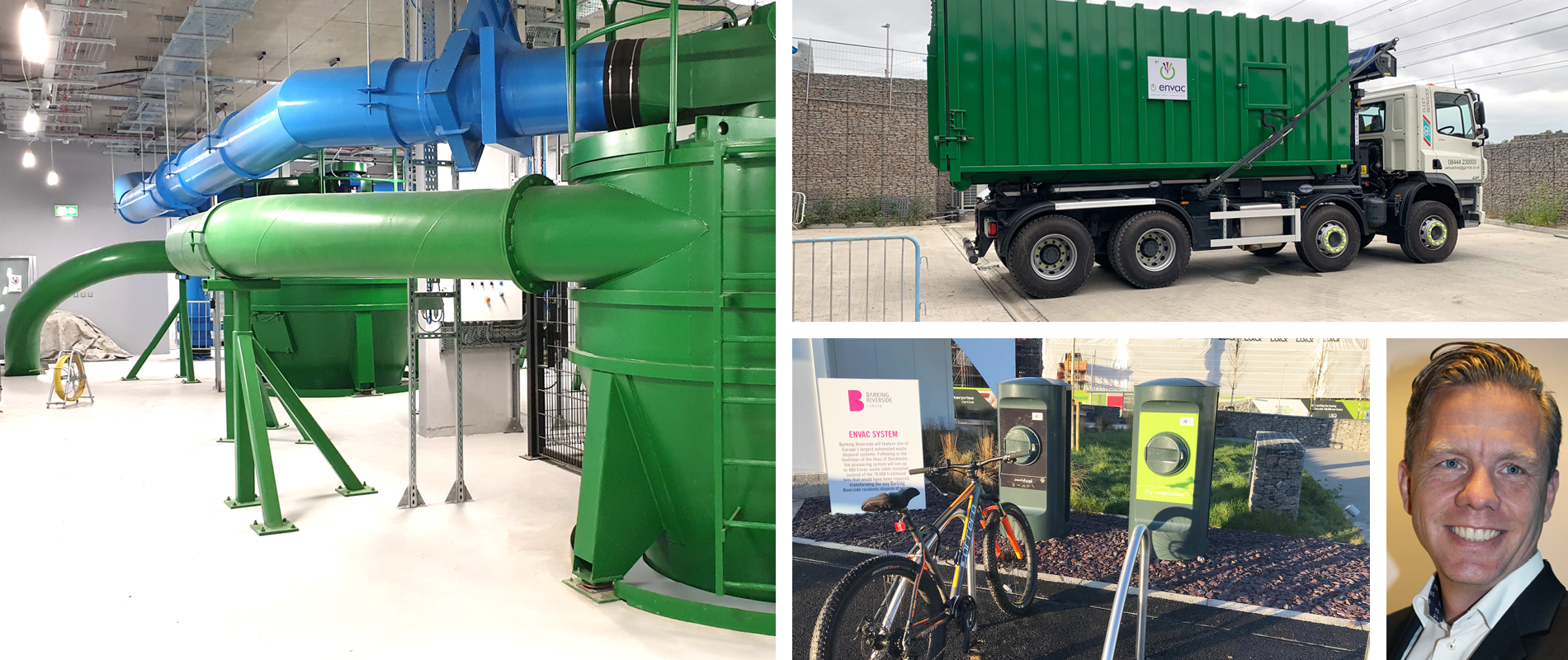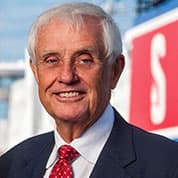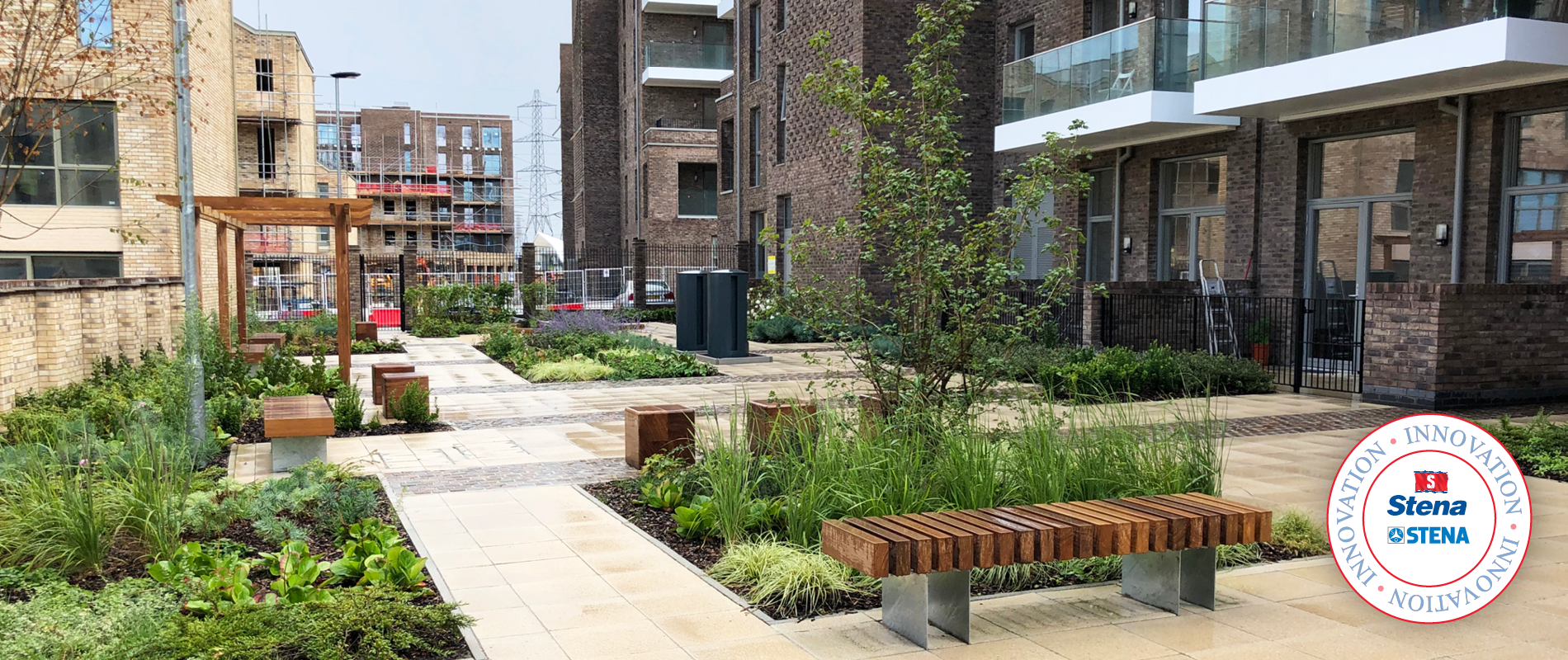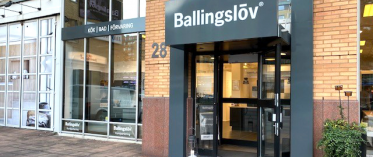ENVAC INSTALLING LARGE VACUUM WASTE COLLECTION SYSTEM IN LONDON
In the London Borough of Barking and Dagenham, an extensive new construction project is underway, where 14,000 new flats will be built by 2030. By investing in Envac's vacuum waste collection system, a cleaner environment is being achieved, along with more surfaces to build on and significantly reduced transports in the area.
The Barking and Dagenham vacuum waste collection system is Envac’s second in London. The first was installed in Wembley back in 2005, but in the years to follow, the financial crisis caused a significant downturn in the market.
“A few years later, we were visited by a delegation of courageous politicians who wanted to challenge old structures and the traditional ways of approaching urban development,” says Patrick Haraldsson, CEO of Envac. “An important part of it was about being able to make the most of the space available, creating good traffic conditions without a lot of heavy transports and with a tidy urban environment. People began looking at our system as a good solution.”
The traditional waste disposal system in London is based on residents placing their waste sacks on the pavement for collection by refuse lorries, often at night. Around 15–20 percent of all heavy transports involve waste management.
“By using our system, Barking and Dagenham can reduce their heavy transports for waste in the borough by 90 percent. In addition, around 14,000 square metres are freed, which can be used for more flats instead of for traditional waste management, which requires a lot more space,” says Patrick Haraldsson.
Once the new residential area is completed, 14,000 flats will have access to the new waste collection system. This will enable the elimination of 19,000 bins that would otherwise have been needed to collect the waste.
“At present, about 400 flats have been connected to the system – the first in April last year – and the system has worked perfectly without any disruptions,” says Patrick Haraldsson.

Left
The waste is moved further underground by suction to closed containers at one of the area’s two central collection points.
Top right
The closed containers are picked up by a container lorry.
Middle
Residents never have more than 50 meters to the nearest waste chute.
Bottom right
Patrick Haraldsson, CEO Envac
Residents deposit their waste in chutes, with sorting by household waste and materials for recycling. Residents never have more than 50 meters to the nearest waste chute. When a certain level has been reached in the chute shaft, the waste is moved further underground by suction to closed containers at one of the area’s two central collection points, where they are then picked up by a container lorry. The maximum suction distance is 2,000 metres. The system detects the type of waste deposited and automatically regulates the amount of air pressure needed based on the weight of the waste. In this way, a system is attained that is both energy optimized and efficient.
“Normal waste bags can’t get stuck. If someone should push in a somewhat longer object and it fastens in a bend, we can pull it out by applying a little extra pressure,” says Patrick Haraldsson.
Envac currently has 36 offices in 22 countries on all continents except Africa. In addition to Envac, which is the largest on the market, there are another fifteen companies that offer similar systems.
“So far, only about 45 cities in the world, or 0.1 percent, have automated waste management as municipal infrastructure. This means that the potential is enormous, not the least in China and India, where there is major interest and where we’ve already started installing systems,” says Patrick Haraldsson.
The most common is to install the system in conjunction with new construction. But it is also an excellent solution for existing urban environments, and has been adopted in Norwegian Bergen, for example, with great success.
“Here they’ve really collaborated across borders within the municipality to get the clean and tidy city they want without a lot of unnecessary transport. The most important factor for success is that there is a political will – and that has really existed both in Bergen and in Barking and
Dagenham,” says Patrick Haraldsson.





